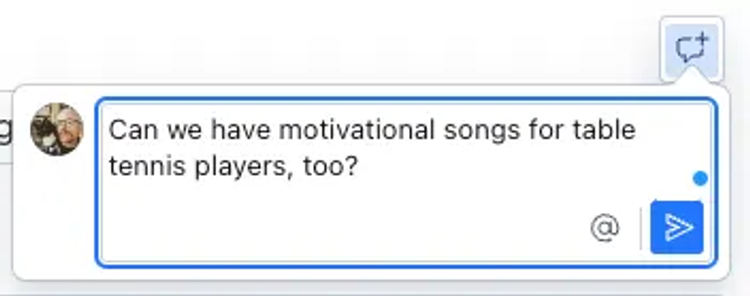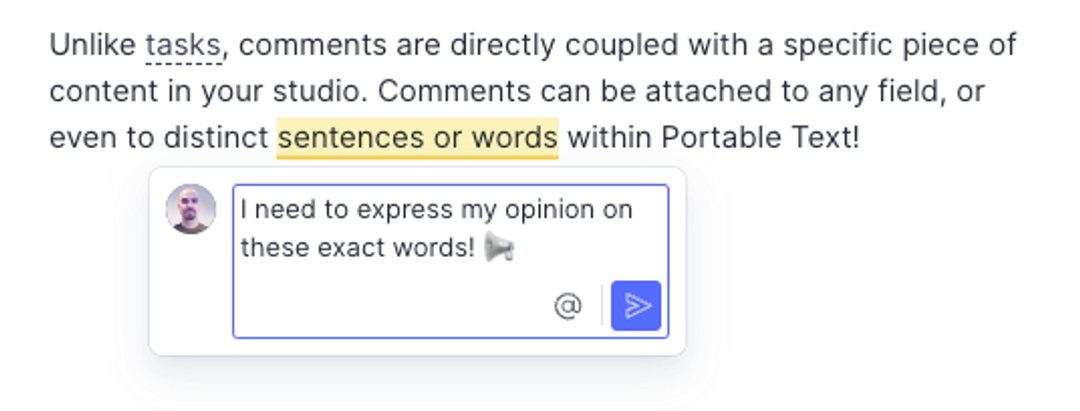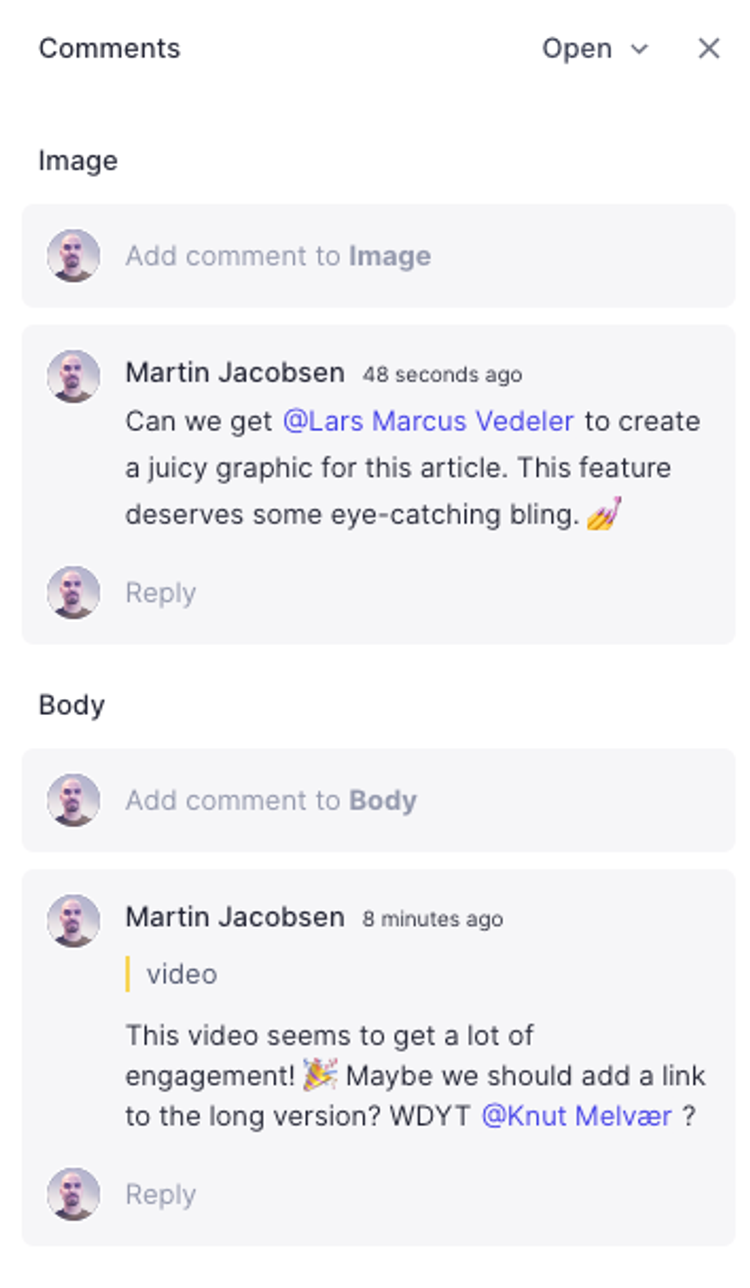Comments for Sanity Studio
Learn to use Comments in Sanity Studio for effective collaboration, including leaving comments, @mentions, and resolving comments.

Comments for Sanity Studio enables effective collaboration workflows right where the work is done. Leave comments on specific document fields or even single words in Portable Text, @mention your colleagues, and streamline your content workflow without ever leaving the studio.
This is a paid feature
This feature is available in the Growth plan.
Comments workflow
Once Comments has been enabled for your project, open any document in your studio to start exploring how they work. If someone has already left comments on any field in the document you will notice a small speech bubble icon 💬 adorning the input showing how many comments have been posted. If no comments have yet been posted, hover any field to bring up the speech bubble to leave the first!
Leaving comments
Hover over any comment-enabled field and click on the comment icon 💬 to open a popover dialog, then type your comment in the input field and hit Send to post it.

To mention a colleague, type @ followed by their name. A list of users with access to the document will appear. Click on the user you want to mention, and they will receive an email notification.
Your comment will now be visible to others with access to the document, and any mentioned users will receive a notification by email.

Unlike their closely related cousin Tasks, comments are always directly coupled with a specific piece of content in your studio. Comments can be attached to any compatible field, or even to distinct sentences or words within Portable Text!

Clicking the 💬 comments icon on a field, will open the comment inbox for the document so you can easily browse through existing comments. Comments are neatly grouped into the fields they correspond to.

Resolving comments
When a comment has been addressed or is no longer relevant, you can mark it as resolved. To do this, click on the Resolve option in the popover menu that appears when hovering. Resolved comments will be hidden from the main view but can still be accessed in the Resolved Comments list.

Reactions, editing, and deleting comments
In addition to resolving comments, the popover menu includes a few more options. You can leave a reaction emoji for effective communication, copy a direct link to the comment, and you have options to edit or delete your comment. These options all work as you'd expect.

Comment notifications
You'll receive notifications when tagged in a comment. You can adjust notifications in your user settings, as shown in the Notifications documentation.
Incorrect links with external studios?
If your studio is hosted externally, it must be added to the Studio's list for the project in sanity.io/manage in order for notification links to point to the correct studio.
Was this page helpful?